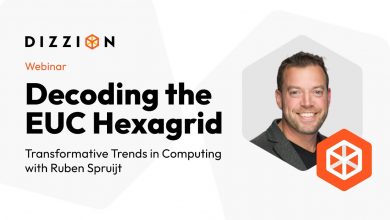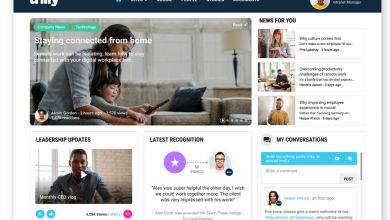The Shift to Intelligent Workspace Lifecycle Management (iWLM)
iWLM encompasses the entire lifecycle—from design and deployment to optimization and retirement—using automation, AI-driven insights, and real-time data to enhance efficiency and user experience.
 In this article Samit Halvadia argues that Intelligent Workspace Lifecycle Management (iWLM) represents a transformative approach for CIOs, moving beyond traditional IT management to a proactive, integrated strategy for overseeing digital workspaces.
In this article Samit Halvadia argues that Intelligent Workspace Lifecycle Management (iWLM) represents a transformative approach for CIOs, moving beyond traditional IT management to a proactive, integrated strategy for overseeing digital workspaces.
iWLM encompasses the entire lifecycle—from design and deployment to optimization and retirement—using automation, AI-driven insights, and real-time data to enhance efficiency and user experience.
Halvadia emphasizes that this shift allows CIOs to address modern workplace challenges, such as managing diverse devices, ensuring application compatibility, and supporting hybrid workforces.
The article highlights how iWLM reduces complexity by automating repetitive tasks (e.g., patching and updates), provides visibility into workspace performance, and enables rapid adaptation to changing business needs. By aligning technology with employee and organizational goals, iWLM positions CIOs as strategic enablers of agility and innovation, rather than just operational overseers.
Relation to Remote, Virtual Working and Digital Workplace Best Practices
The adoption of iWLM aligns seamlessly with the broader trend of a new era of remote and virtual working, which has matured significantly, building on shifts catalyzed by the pandemic and sustained by technological progress.
As organizations embrace hybrid and fully remote models, the digital workplace has become the backbone of productivity, collaboration, and employee engagement across distributed teams. Halvadia’s iWLM framework reflects and enhances digital workplace best practices by providing a structured, intelligent approach to managing the tools and environments that remote workers rely on daily.
For remote and virtual work, seamless access to applications and devices is non-negotiable. iWLM’s focus on automation—such as streamlining software updates or resolving compatibility issues—directly supports this by minimizing disruptions for employees working from home or satellite locations.
This ties into best practices like ensuring operational continuity and reducing IT friction, which are critical when support teams can’t physically access devices. The article’s mention of real-time visibility into workspace performance also enables CIOs to proactively address issues like latency or security vulnerabilities, which are heightened concerns in dispersed setups reliant on cloud platforms and VPNs.
The Workplace as Digital Ecosystem
Moreover, iWLM’s lifecycle perspective resonates with the trend of treating digital workspaces as evolving ecosystems. The ability to assess and optimize applications and hardware throughout their use aligns with best practices of scalability and sustainability—key for companies balancing remote work’s flexibility with cost efficiency.
For instance, identifying underused tools or predicting hardware refresh needs reduces waste and ensures employees have reliable technology, a priority in virtual environments where downtime can disconnect teams.
This adaptability is vital as businesses navigate fluctuating demands, such as onboarding remote hires or integrating new collaboration tools like advanced video platforms or AI-enhanced project management systems.
The employee-centric aspect of iWLM also connects to the cultural shift in digital workplaces toward personalization and inclusivity.
By leveraging AI to tailor workspace configurations—ensuring, say, a marketing team has different tools than engineers—CIOs can boost productivity and satisfaction, addressing a common remote work challenge: maintaining engagement. This mirrors broader trends where companies invest in user experience to retain talent in a competitive, location-agnostic job market.
In essence, Halvadia’s iWLM framework equips CIOs to lead in the remote and virtual work era by marrying intelligent technology with lifecycle management. It embodies digital workplace best practices—automation, adaptability, visibility, and user focus—that empower distributed workforces, making it a cornerstone of the modern, tech-driven workplace.



